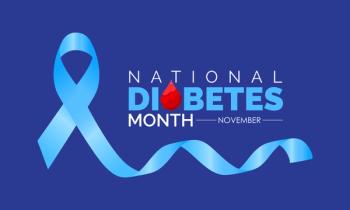
Study Provides Insight Into HIV-Associated Cardiac Death Risk
Individuals with HIV have more QT interval variability than those without the disease, which may lead to the increased risk of sudden cardiac death.
A new study provides insight into how HIV may increase the risk of cardiac death in infected individuals.
The findings, which were published in Circulation and presented at the annual American Heart Association Scientific Sessions, indicated that those with HIV have more QT interval variability, a marker of ventricular repolarization compared with individuals who do not have HIV.
Although the increase in sudden cardiac death in those with HIV has been previously established, the biological roots of this increase has been unclear, the study authors wrote.
For the study, the authors used data collected from the National Institutes of Health Multicenter AIDS Cohort Study (MACS), an ongoing 30-year study that follows the health of gay and bisexual men from 4 US cities. The study, which is the largest of QT variability to date, included 1123 men: 589 of whom are HIV-positive and 534 of whom are HIV-negative. Of the men with HIV in the study, 83% had undetectable levels of the virus in their blood as a result of antiretroviral therapy (ART). Approximately 61% of men identified themselves as white, 25% as African American, and 14% as Hispanic or other. On average, individuals with HIV had been treated for approximately 13 years.
To collect data on their QT intervals, the participants wore a portable electrocardiogram (ECG) patch device to measure heart rhythms. The authors analyzed 3 to 4 days of data on the intervals between beats.
According to the results, those with HIV had higher QT interval variability [adjusted difference of +0.077 (95% CI: +0.032 to 0.123)] compared with men without HIV. Variability was also associated with detectable viral load, as measured with a blood test. On average, men with HIV who had an undetectable viral load had a QT interval of just 0.064 greater than men without HIV. However, men with higher levels of the virus had an average of 0.150 greater QT interval variability, according to the study.
Additionally, the authors compared information to determine how strongly the HIV link is to the QT interval variation compared with other risk factors for cardiovascular disease, such as high blood pressure, opioid use, high cholesterol levels, obesity, smoking, and diabetes.
The results suggest that the extent of abnormal QT variation in men living with HIV was comparable to that of 8 years of aging in those without detectable virus in the blood and close to 20 years in those with detectable virus. They also separately collected blood samples to analyze for inflammatory molecules, finding that men with HIV had 14% more of the inflammation marker IL-6 and 22% more sCD163 compared with men who didn’t have HIV, according to the study. Higher levels of inflammation were associated with more QT variability and arrhythmia risk, the authors noted.
“HIV puts people in a state of chronic heightened inflammation and that might be a major contributor to why the heart is prone to abnormal rhythms,” lead author Amir Heravi, a medical student at the Johns Hopkins University School of Medicine, said in a press release. “However, inflammation would only partly explain our findings and our results showed even after adjusting for effects of inflammation, HIV infection was associated with higher QT variability. We think it may be a combination of the virus and the body’s reaction to the virus via inflammation that ultimately contributes to an increased risk of sudden cardiac death.”
According to Heravi, the findings implicate the importance of treating and controlling HIV infection early on with ART, maintaining adherence to therapy, and continuing to monitor virus levels.
REFERENCES
Heravi AS, Etzkorn L, Urbanek J, et al. HIV infection is associated with variability in ventricular repolarization: The Multicenter AIDS Cohort Study (MACS). Circulation. 2019.
How HIV Infection May Raise The Risk For Sudden Cardiac Death: New Study Sheds Light [news release]. John Hopkins Medicine’s website.
Newsletter
Stay informed on drug updates, treatment guidelines, and pharmacy practice trends—subscribe to Pharmacy Times for weekly clinical insights.


















































































































































































































